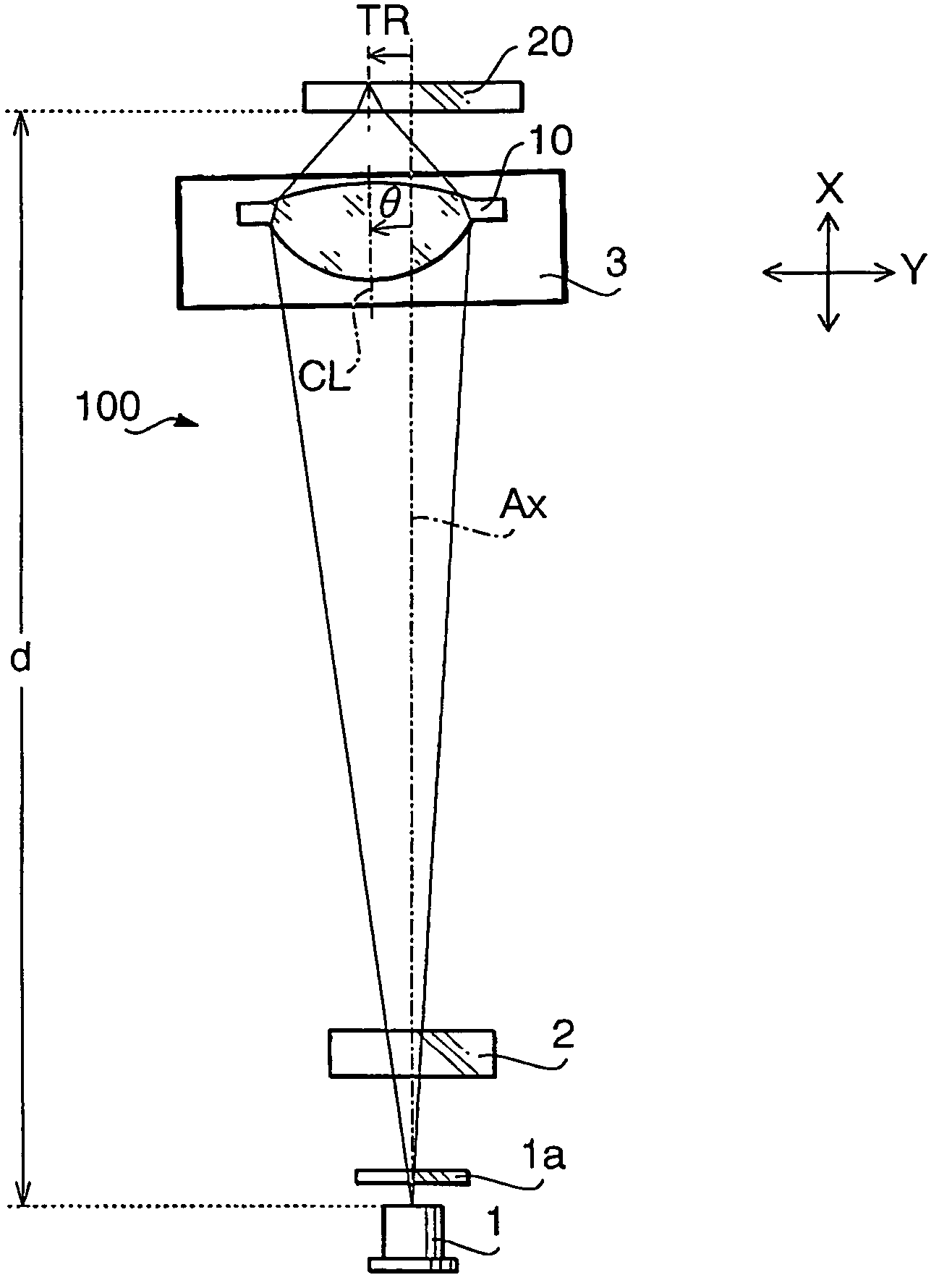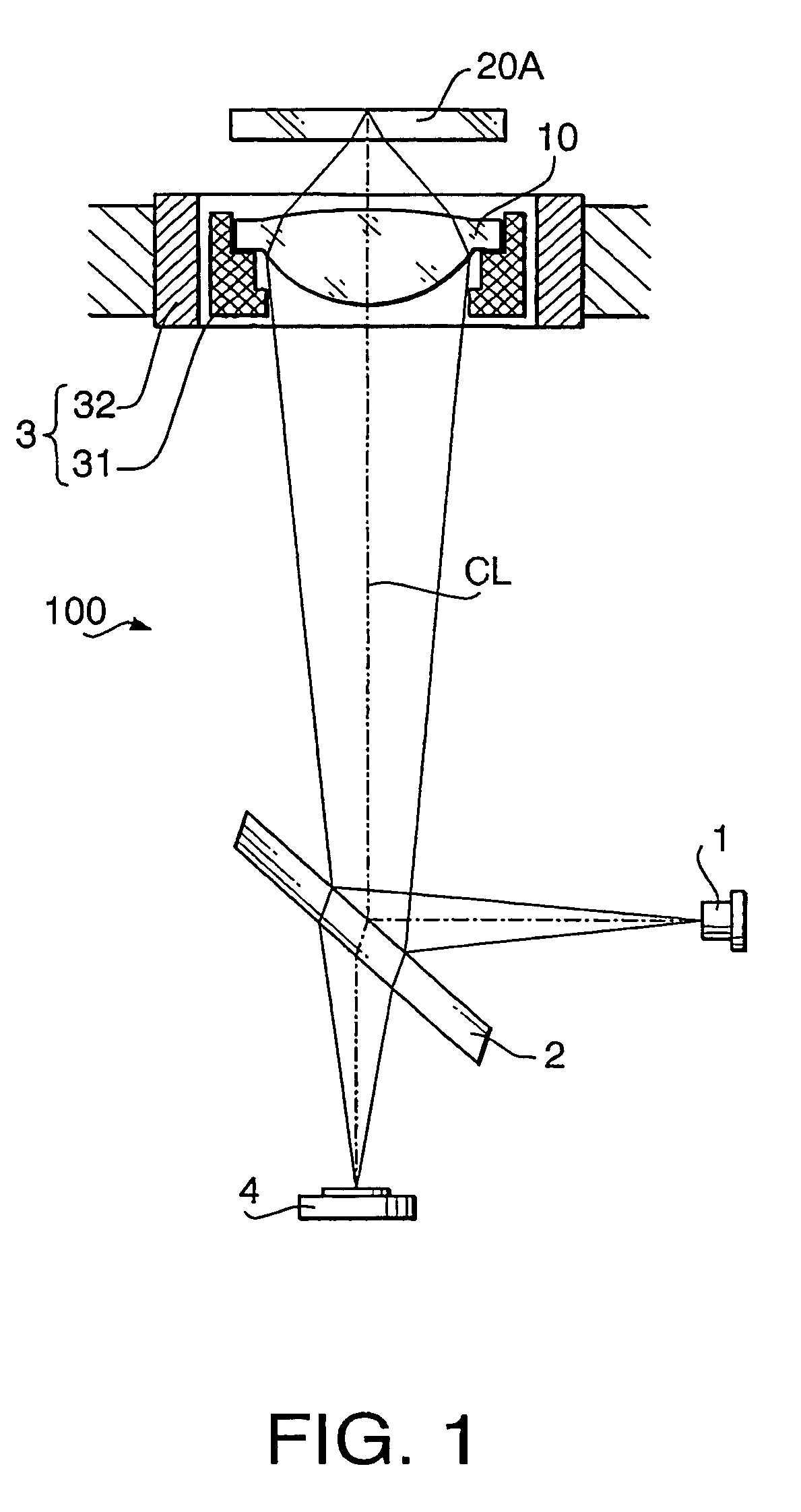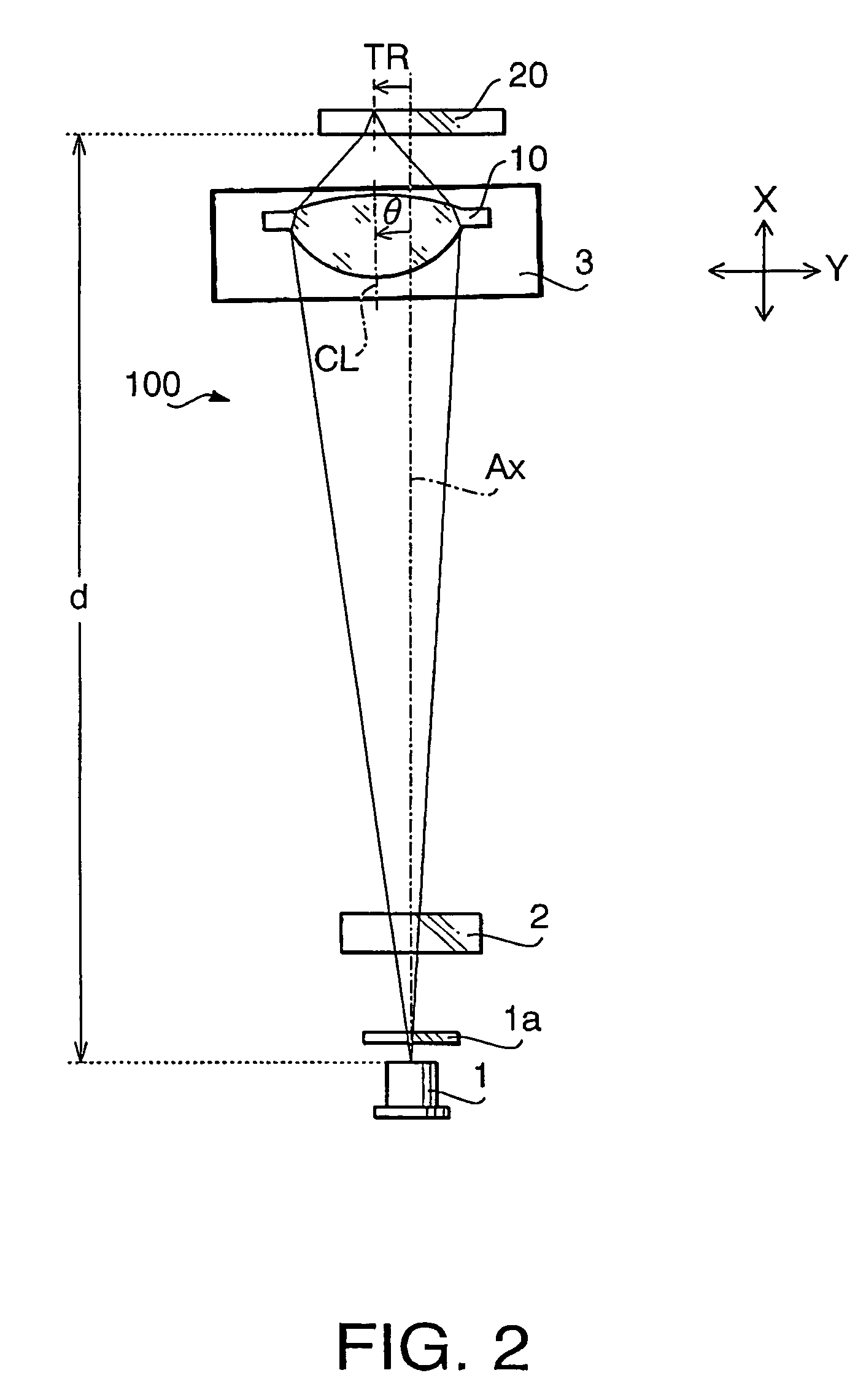Optical system for optical disc
a technology of optical discs and optical systems, applied in the field of optical systems, can solve the problems of deteriorating the quality of the recording (optical) signal and the reproducing, difficult to achieve the correction of astigmatism, and difficulty in using optical systems for optical discs such as dvds, etc., to achieve the effect of sufficient suppression of aberrations
- Summary
- Abstract
- Description
- Claims
- Application Information
AI Technical Summary
Benefits of technology
Problems solved by technology
Method used
Image
Examples
first embodiment
[0064]FIG. 1 schematically shows an optical system 100 according to a first embodiment of the invention. The optical system 100 is used for recording data to and / or reproducing data from an optical disc 20A (e.g. DVD) having a relatively high recording density and a relatively thin cover layer. The optical system 100 is employed in an optical disc drive which records data to and / or reproduces data from the optical disc 20A.
[0065]As shown in FIG. 1, the optical system 100 is provided with a light source 1, a beam splitter 2, a lens actuating mechanism 3, a sensor 4 and an objective lens 10. The optical system 100 is configured as a finite optical system which does not use a coupling lens. That is, a laser beam emitted by the light source 1 is converged only by the objective lens 10.
[0066]The light source 1 emits the laser beam having a relatively short wavelength suitable for the optical disc 20A so that the laser beam passed through the beam splitter 2 and the objective lens 10 form...
second embodiment
[0093]FIG. 3 schematically shows an optical system 200 according to a second embodiment of the invention. The optical system 200 is used for recording data to and / or reproducing data from a plurality of types of optical discs having different thicknesses of cover layers. In FIG. 3, to elements which are similar to those shown in FIG. 1, the same reference numbers are assigned, and the detailed description thereof will not be repeated.
[0094]As examples of the plurality of types of optical discs, the optical disc 20A (e.g. DVD) and an optical disc 20B (e.g. CD or CD-R) which has a lower recording density than that of the optical disc 20A and has a cover layer thicker than that of the optical disc 20A are illustrated. The optical system 200 is employed in an optical disc drive which records data to and / reproduces data from the plurality of types of optical discs.
[0095]As shown in FIG. 3, the optical system 200 includes a light source 1D, a diffraction grating 5, the beam splitter 2, th...
first example
[0132]An optical system according to a first example has a configuration described in the first embodiment with reference to FIG. 1. Therefore, the first example will be explained with reference to FIG. 1. Table 1 shows performance specifications of the optical system 100 according to the first example, and Table 2 shows a numerical configuration of the optical system 100 according to the first example.
[0133]
TABLE 1Optical Disc 20ADESIGN655WAVELENGTH λ (nm)NA0.620M−0.143THICKNESS OF COVER0.60LAYER (mm)
[0134]In Table 1, M represents the magnification, the design wavelength is a wavelength suitable for the recordation / reproduction of the optical disc being used, NA is a numerical aperture on the optical disc side. These symbols are also applied to similar tables in concrete examples indicated below.
[0135]
TABLE 2SurfaceNumberrdnν#00.50#10.251.51664.2#211.32#31.1291.201.54455.7#4−1.9750.80#50.601.58529.9#6—
[0136]In Table 2, “surface number” represents a surface number of each surface of...
PUM
| Property | Measurement | Unit |
|---|---|---|
| distance | aaaaa | aaaaa |
| thick | aaaaa | aaaaa |
| thicknesses | aaaaa | aaaaa |
Abstract
Description
Claims
Application Information
 Login to View More
Login to View More - R&D
- Intellectual Property
- Life Sciences
- Materials
- Tech Scout
- Unparalleled Data Quality
- Higher Quality Content
- 60% Fewer Hallucinations
Browse by: Latest US Patents, China's latest patents, Technical Efficacy Thesaurus, Application Domain, Technology Topic, Popular Technical Reports.
© 2025 PatSnap. All rights reserved.Legal|Privacy policy|Modern Slavery Act Transparency Statement|Sitemap|About US| Contact US: help@patsnap.com



